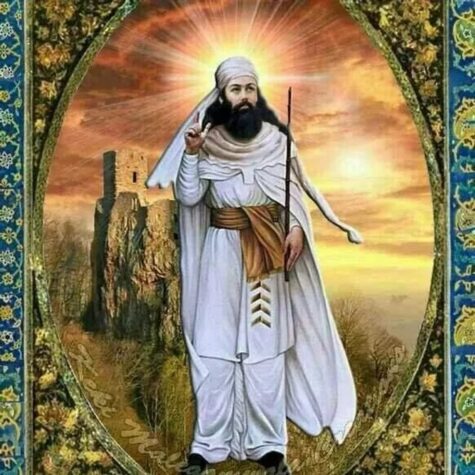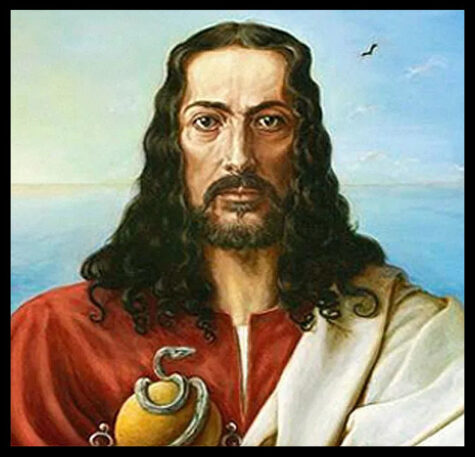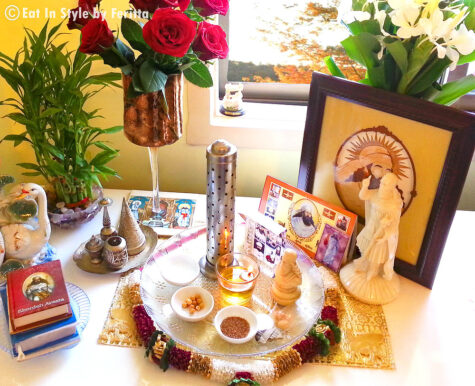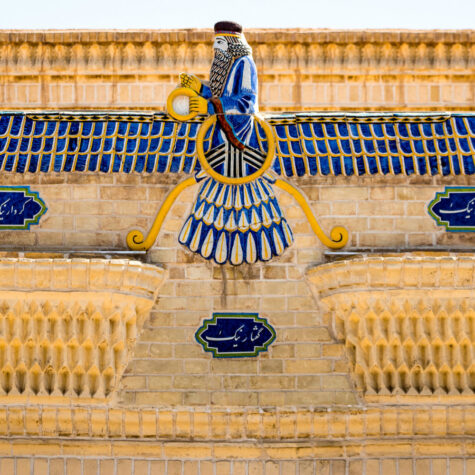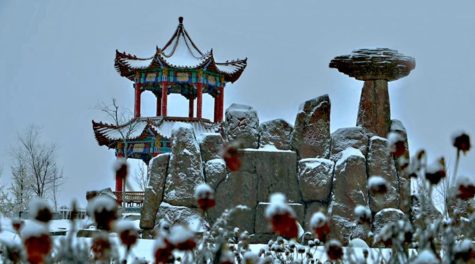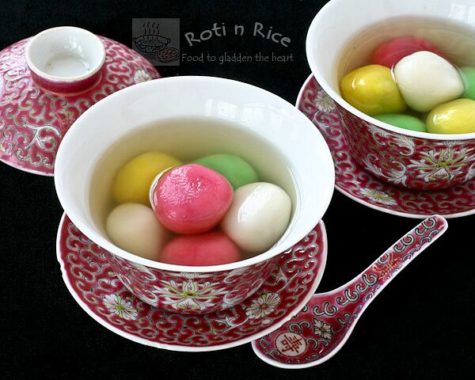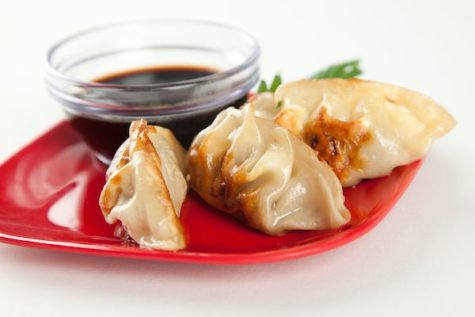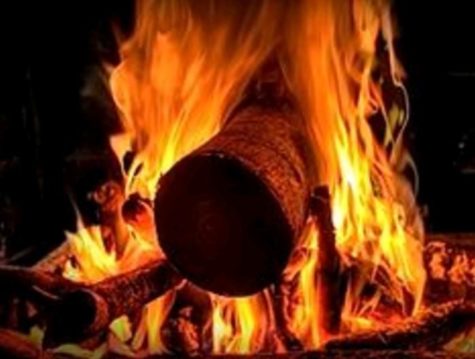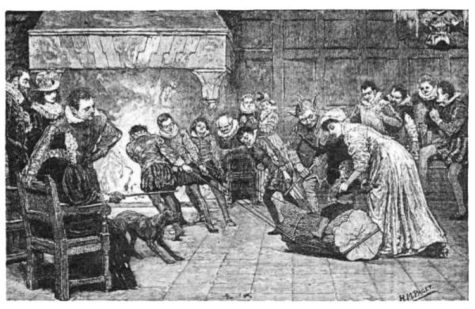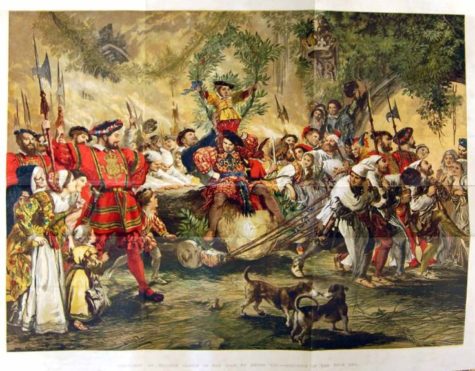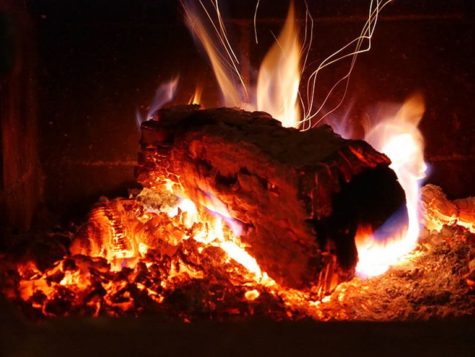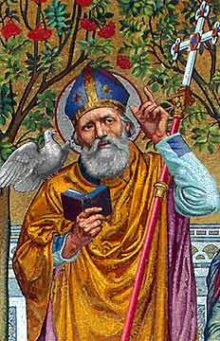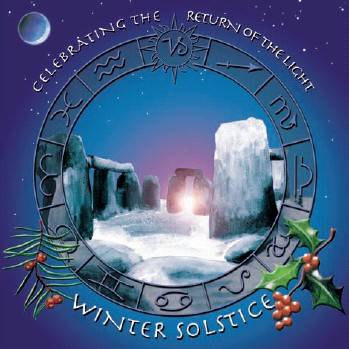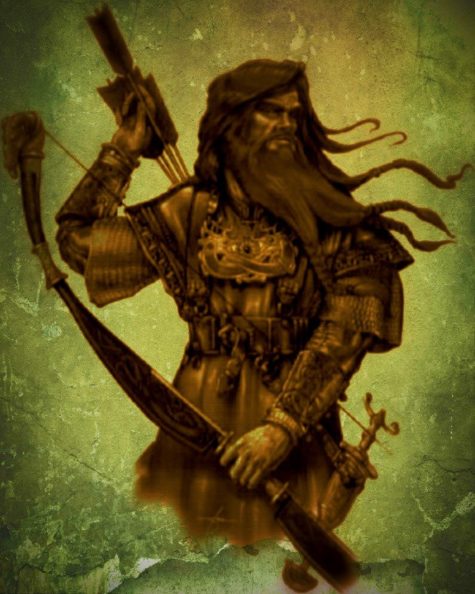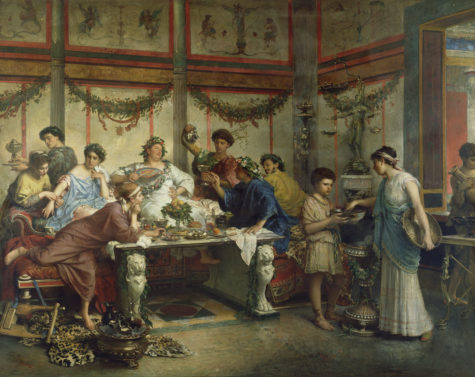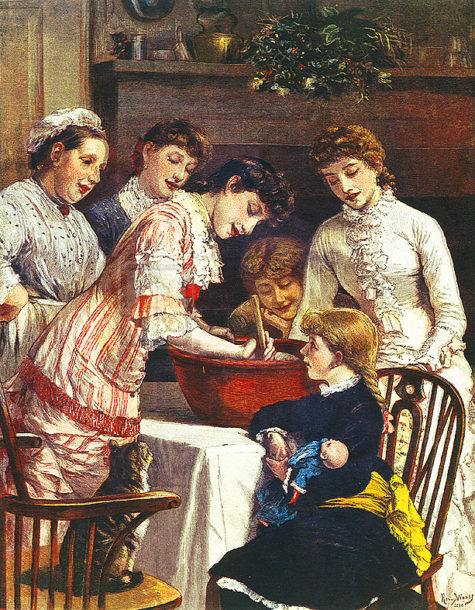Family Gatherings
The Birthday of Zarathushtra, one of the most important Zoroastrian festivals. Regarded as one of the most significant festivals of the Parsis, it is also referred to as Navroz-I-Khas. Although the actual date of his birth cannot be accurately identified, the festival of Khordad Sal symbolically celebrates the birthday of Prophet Zarathushtraz on the 6th day of the first Parsi month, Farvardin.
This date, however, falls on different days depending upon which of the three religious calendars are followed, and on those dates will vary from year to year, here are the dates for 2021:
- Fasli (Iranian): March 26
- Qadimi (Kadmi): July 22
- Shenshai: August 21
Who is Zoroaster?
Zoroaster, also known as Zarathustra, was the founder of Zoroastrianism. Some accounts place his birth in western Iran, perhaps near Tehran, however based on the dialect of his poetry, it seems likely that he was born in the east. He is credited with the authorship of the Yasna Haptanghaiti as well as the Gathas, hymns which are at the liturgical core of Zoroastrianism.
There is no consensus among scholars about when he was born. The estimated dates of his birth range from 6000 BC to 100 BC. The majority of his life is known only through the Avestan texts. It is possible that Zoroaster was a purely mythological person or that the writings attributed to him are actually the work of multiple authors who wrote under the same name. All of the details have been lost in antiquity.
Legend says that when his mother was five months pregnant, she had a nightmare about the ending of the world. But then an angel appeared to her, and told her that her unborn child would become a great prophet who would be able to reverse the impending destruction.
It is said that his face was shining at the moment of his birth, and that it is on account of this that he was named Zarathustra, which according to one translation means ‘golden (zara) light (ushas)’; according to another it means ‘yellow (zara) camel (ushtra)’, a translation perhaps more in keeping with the pastoral society into which he was born.
Celebrating The Day
Khordad Sal is the equivalent of Christmas for Christians, and it is a day of great festivities and celebrations.
Khordad means perfection, and it is customary on this day to visit the Fire Temple to give thanks to Ahura Mazda, the Persian name for the one God, for giving humanity the ideal gift of the Prophet Zarathushtra. His followers participate in a jashan or thanksgiving ceremony; listen to stories of his miraculous birth and life; and then celebrate with a lavish community meal, a drink and a dance.
On this day people get busy with cleaning their homes and decorating them with rangoli, colored sand spread on the floor in different patterns. Fragrant flowers are used for further beautifying the homes. People get up early on the day of the festival and don their newest and finest clothes. They prepare traditional foods as part of the luxurious dinner that forms a major part of the celebrations.
The tables are decorated in a special fashion as part of the festivities. Foods and flowers are the main highlights at the table. They are accompanied by dishes of nuts and candies. The different delicacies prepared include kebab, chelo, fish and seasonal fruits, such as melons, nectarines and apples.
The Parsis also visit fire temples or places of worship to offer thanks to Ahura Mazda and remember the birth of their prophet. A special ritual followed is Jashan, or thanksgiving prayers to give thanks for and celebrate the soul that evinced a philosophy of life that is both giving and fulfilling, which is performed in the agiaries. A grand feast follows this ritual in the temples.
Because this is a time to unite and mingle with near and dear ones, Khordad Sal gives the Parsis an opportunity for togetherness and to make resolutions for the upcoming year ahead. People exchange gifts and salute each other with the greeting: Khordad Sal Mubarak!. Prayers are offered and are followed by festive parties
Typically a day for family gatherings, however, if families are unable to be together then prayers are offered for those who are not in attendance. It is an important celebration for the Parsi community, and because family (and community) is central to the themes of Zoroastrianism, guests are invited to participate in the festivities.
Parsis also take the time during Khordad Sal to be introspective. They look at ways in which they can improve the lives of others and themselves.
About The Zoroastrian Faith
Zoroastrianism, also commonly known as Mazdaism is one of the oldest monotheistic religions in the history of humanity. Very little is known about it. The religion is pillared on the belief in the existence of heaven and hell, the Golden Rule (do unto others what you want to be done unto you), messianism and free will.
Zoroastrianism was for ages the world’s most powerful religion, termed by some as ‘The Supreme Religion.’ The 7th century saw a rise in the suppression of the religion. The suppression was a result of the victory by the Muslims in conquering the state of Persia. The Zoroastrian faith has endured many hardships, the most significant being the invasion into Iran by Alexander and later, the Arab conquest of Iran.
The three tenets of the religion include good thoughts, good deeds, and good words. Zoroastrianism believes there is only one supreme, universal and transcendent God, the Ahura Mazda, “Wise Lord.” They believe that Ahura Mazda discovered the world and then passed on all the teachings through the Prophet Zoroaster.
Though greatly diminished in numbers, Zarathustra’s followers have continued to honor his revolutionary teachings for over 3000 years. Most modern Zoroastrians live in India, although smaller communities exist around the world.
As Zoroastrian numbers continue to dwindle, courts battle ancient rules in the 21st century. Tradition forbids women who marry non-Parsi Zoroastrians from ever again entering fire temples, and as more and more followers enter interfaith marriages, leaders question the religion’s ability to continue in the world.
Sources:
The Dōngzhì Festival or Winter Solstice Festival is one of the most important festivals celebrated by the Chinese and other East Asians during the Dōngzhì solar term (winter solstice) on or around December 22 when sunshine is weakest and daylight shortest.
The origins of this festival can be traced back to the yin and yang philosophy of balance and harmony in the cosmos. After this celebration, there will be days with longer daylight hours and therefore an increase in positive energy flowing in. The philosophical significance of this is symbolized by the I Ching hexagram fù (復, “Returning”).
To really get a feel for the Dōngzhì Festival, you have to imagine hard, rural living during a gray Han Dynasty winter more than 2,000 years ago.
Now picture a family meal at a table set with hearty, warming foods, raising the hopes for spring’s arrival. That’s the spirit of the Dōngzhì Festival.
The Dōngzhì Festival marries the winter solstice with nature’s harmonious balance of yin and yang energy. From this point forward, dongzhi (i.e. the extreme of winter) and the negative yin qualities of darkness and cold give way to the positive yang qualities of light and warmth. In other words, take heart — spring will come.
Traditional activities
Traditionally, the Dōngzhì Festival was a day to regroup with a family get together before tackling the last leg of winter. Today, with survival less of a daily concern and no time off granted, the Dōngzhì Festival is celebrated mostly with a family meal full of warm, hearty foods. One activity that occurs during these get togethers (especially in the southern parts of China and in Chinese communities overseas) is the making and eating of tangyuan, or balls of glutinous rice, which symbolize reunion.
Tangyuan are made of glutinous rice flour and sometimes brightly colored. Each family member receives at least one large tangyuan in addition to several small ones. The flour balls may be plain or stuffed. They are cooked in a sweet soup or savory broth with both the ball and the soup/broth served in one bowl. It is also often served with a mildly alcoholic unfiltered rice wine containing whole grains of glutinous rice (and often also Sweet Osmanthus flowers), called jiuniang.
- Here’s a recipe for Glutinous Rice Balls
In northern China, people typically eat dumplings on Dōngzhì. It is said to have originated from Zhang Zhongjing in the Han Dynasty. On one cold winter day, he saw the poor suffering from chilblains on their ears. Feeling sympathetic, he ordered his apprentices to make dumplings with lamb and other ingredients, and distribute them among the poor to keep them warm, to keep their ears from getting chilblains.
Since the dumplings were shaped like ears, Zhang named the dish “qùhán jiāoěr tāng” (祛寒嬌耳湯) or dumpling soup that expels the cold. From that time on, it has been a tradition to eat dumplings on the day of Dōngzhì.
- Here’s a recipe for Lamb Dumplings
Old traditions also require people with the same surname or from the same clan to gather at their ancestral temples to worship on this day. There is always a grand reunion dinner following the sacrificial ceremony.
The festive food is also a reminder that we are now a year older and should behave better in the coming year. Even today, many Chinese around the world, especially the elderly, still insist that one is “a year older” right after the Dōngzhì celebration instead of waiting for the Chinese New Year.
In Taiwan
To Taiwanese people, the festival in winter also plays a very important role. It is also a tradition for Taiwanese to eat tangyuan on this day. They also use the festive food as an offering dish to worship the ancestors.
In an interesting twist, in accordance with ancient Taiwanese history, many people take some of the tangyuan that have been used as offerings and stick them on the back of the door or on windows and tables and chairs. These “empowered” tangyuan supposedly serve as protective talismans to keep evil spirits from coming close to children.
 In addition to following some of the customs practiced in China, the people of Taiwan have their own unique custom of offering nine-layer cakes as a ceremonial sacrifice to worship their ancestors.
In addition to following some of the customs practiced in China, the people of Taiwan have their own unique custom of offering nine-layer cakes as a ceremonial sacrifice to worship their ancestors.
- Here’s a recipe for Nine Layer Cake
These cakes are made using glutinous rice flour in the shape of a chicken, duck, tortoise, pig, cow or sheep, and then steamed in different layers of a pot. These animals all signify auspiciousness in Chinese tradition.
Another interesting custom in Taiwan is that many people take invigorating tonic foods during this particular winter festival. To the Taiwanese, winter is a time when most physical activities should be limited and you should eat well to nourish your body. This practice follows the habits shown by many animals which follow the law of nature and hibernate throughout winter months to rejuvenate and to preserve life. In order to fight cold temperatures, it is necessary to eat more fatty and meaty foods during winter when your body can better absorb the rich and nutritional foods at this time due to a slower metabolic rate.
Since Dōngzhì is the “Extreme of Winter”, Taiwanese regard it as the best time of the year to take tonic foods. Some of the most widely popular winter tonic foods enjoyed by Taiwanese to fight cold and strengthen the body’s resistance are mutton hot pot and ginger duck hot pot. Other foods like chicken, pork and abalone are also common materials used in making tonic foods with nurturing herbs such as ginseng, deer horn and the fungus cordyceps.
Source: Wikipedia
On the winter solstice, on the longest night of the year, people would place and set afire an entire tree, that was carefully chosen and brought into the house with great ceremony. The largest end of the log would be placed into the fire hearth while the rest of the tree stuck out into the room! The log would be lit from the remains of the previous year’s log which had been carefully stored away and slowly fed into the fire through the Twelve Days of Christmas.
It was considered important that the re-lighting process was carried out by someone with clean hands.
Tradition has it that the burning of the Yule log was performed to honor the Great Mother Goddess. The log would be lit on the eve of the solstice using the remains of the log from the previous year and would be burned for twelve hours for good luck and protection.
As the fire began all other lights would be extinguished and the people would gather round the fire. In thanksgiving and appreciation for the events of the past year and in bidding the year farewell each person would toss dried holly twigs into the fire.
The next phase of the burning of the Yule log commenced with people tossing oak twigs and acorns into the fire and they would shout out their hopes and resolutions for the coming New Year and sing Yuletide carols. The celebration of the Yule log fire ended with unburned pieces of the Yule log saved to start the fire of next winter’s solstice Yule log.
The custom of the Yule Log spread all over Europe and different kids of wood are used in different countries. In England, Oak is traditional. The “mighty oak” was the most sacred tree of Europe, representing the waxing sun, symbolized endurance, strength, protection, and good luck to people in the coming year. In Scotland, it is Birch; while in France, it’s Cherry. Also, in France, the log is sprinkled with wine, before it is burnt, so that it smells nice when it is lit.
The earliest Yule Log in France can be traced back to Celtic Brittany. When the Catholic Church stamped out the Pagan tradition, it adapted. In the 12th century, the ceremony became more elaborate.
Families would haul home enormous logs and in some regions, the youngest child was allowed to ride the log home. As families dragged their logs home, passers by would raise their hats because they knew the log was full of good promises and its flame would burn out old wrongs.
For the Vikings, the yule log was an integral part of their celebration of the solstice, the julfest; on the log, they would carve runes representing unwanted traits (such as ill fortune or poor honor) that they wanted the gods to take from them.
People would also use the log as a way to predict events in the upcoming year. They would hit the burning log with tongs and the embers emitted would tell them what the harvest would be like. The more embers, the more corn. The fire was read and predictions were made for the coming year based on the sparks and flames they saw, like how many chickens or calves would be born, marriages in the family, health, wealth, etc. If the fire cast shadows on the wall, there would be a death in the family that year.
The remaining cinders would be placed in the soil so they would prevent grain diseases and produce a good harvest. They’d be spread around chicken coops to keep away foxes and in the barns and lofts where corn was stored to keep rats and weevils away. During a storm, throwing a handful into the fire would keep the house safe from lightening.
The ashes of the Yule Log were believed to hold magical and medicinal powers that would ward off evil spirits for the coming year. Ashes from the Yule log are very beneficial to garden plants, however, it is considered very unlucky to throw out the ashes of the Yule log on Christmas day.
Various chemicals can be sprinkled on the log like wine to make the log burn with different colored flames! Here’s a short list. Be sure to follow safety precautions if you plan on using them!!
- Potassium Nitrate = Violet
- Barium Nitrate = Apple Green
- Borax = Vivid Green
- Copper Sulphate = Blue
- Table Salt = Bright Yellow
- Themes: Work; Rest; Recreation; Prosperity
- Symbols: All the Tools of Your Trade
- Presiding Deity: Ka-blet-jew-lei-hat
About Ka-blet-jew-lei-ha: The Assam goddess of the marketplace and merchants takes a much deserved rest from her labors today and focuses on rewarding tasks that have been well done throughout the last eight months.
To do today:
For most folks in the United States, Labor Day (celebrated the first Monday in September) represents a long weekend without normal workaday activities. From a magical perspective, this holiday offers us a chance to thank Ka-blei-jew-lei-ha for our jobs (which keep a roof overhead and food on the table) and ask for her blessing on the tools we use regularly. For example:
- A secretary might empower his or her pen and steno pad.
- A musician can charge his or her instrument.
- A shopkeeper might anoint the cash register.
- A book dealer might burn specially chosen incense near goddess-centered books (and in the business section).
Some potential herbal tinctures and oils to use for inspiring Ka-blei-jew-lei-ha’s prosperity and watchfulness include cinnamon, clove, ginger, mint, orange, and pine. To partake of the goddess’s abundance by energizing your skills with her magic, blend all of these (except pine) into a tea. To bless your home or your workplace blend the above oils with water and wash the front steps with it.
The goddess can help with job searches too. Just tell her your need then review the newspaper and see what companies catch your eye. Then get on the phone or get the resume out so Ka-blei-jew-let-hat can open that doorway.
Source: 365 Goddess
Note: The only reference to this goddess that I could find was the one in the book 365 Goddess. More commonly, Oya and Ayizan are the goddesses associated with the marketplace.
- Colors: red, green, white
- Plants: Daffodils, leeks
- Activities: Send flowers, attend concerts, host a dinner party
Saint David’s Day is the feast day of Saint David, the patron saint of Wales, and falls on 1 March each year. The date of 1 March was chosen in remembrance of the death of Saint David on that day in 589, and has been celebrated by followers since then. The date was declared a national day of celebration within Wales in the 18th century.
The 17th century diarist Samuel Pepys noted how Welsh celebrations in London for St David’s day would spark wider counter-celebrations among their English neighbors: life-sized effigies of Welshmen were symbolically lynched, and by the 18th century the custom had arisen of confectioners producing ‘Taffies’ – gingerbread figures baked in the shape of a Welshman riding a goat – on St David’s Day.
In 2003 in the United States, St. David’s Day was recognized officially as the national day of the Welsh, and on 1 March the Empire State Building was floodlit in the national colors, red, green and white. It is invariably celebrated by Welsh societies throughout the world with dinners, parties, recitals and concerts.
To celebrate this day, people wear a symbol of either a leek, or daffodil. The leek arises from an occasion when a troop of Welsh were able to distinguish each other from a troop of English enemy dressed in similar fashion by wearing leeks. An alternative emblem developed in recent years is the daffodil.
Source: Unknown
Here is a nice little article about the history of midwinter celebrations from Delaware Online:
Ancient Worship:
Long ago, people worshiped the sun as a god. His cycles were watched and measured with great care because it was thought the quality of life on Earth changed dramatically according to his whims.
As the season changed and winter fell, survival became much harder for ancient man. Many would not live through a cold winter, when food became scarce. As the days shortened, they feared the sun would disappear completely and leave them helpless in the dark.
So they lighted fires and performed elaborate rituals to ensure the sun’s return. They also feasted when the sun reversed its course, and days began to grow long again.
One of the earliest solstice celebrations was the Mesopotamian holiday Zagmuk. When light waned in mid-winter, Mesopotamians would re-enact their god Marduk’s battle against the forces of darkness and chaos and then celebrate the victory of light and order.
More than 4,000 years ago, ancient Egyptians called their sun god Ra-Horakhty, later known as Horus. As winter arrived and his appearance became more brief each day, it was seen as a sign that he was growing weak and ill. In late December, when days began to grow longer, they celebrated his recovery and renewed health. They decked their homes with palm fronds, which symbolized the victory of life over death.
Romans honored the god Saturn by celebrating Saturnalia in early December. This festival was followed, on the solstice, by Brumalia, from the word bruma meaning “shortest day.”
By 70 A.D., many Roman soldiers had joined a cult around the sun god Mithras, whom they adopted after fighting in Persia, modern day Iran and Syria. Dec. 25 was recognized as Mithras’ birthday.
Because Mithras was so popular with soldiers, his cult spread quickly to all parts of the Roman Empire, Turkey, Bulgaria, Romania, the Balkans and gained a strong foothold in Britain. His temples, called Mithraeums, can be found throughout England and Germany.
In the fourth century, the Roman Emperor Constantine proclaimed Dec. 25 the birthday of Jesus Christ, according to many scholars.
“The popularity of Mithraism in the Roman Empire was probably why the early Christian Church decided to celebrate the birth of Jesus at that time,” said Alan Fox, a philosophy professor at the University of Delaware. It was thought that it would be easier to persuade the local people to accept new beliefs if the new religious rituals were superimposed on a holiday from their own religion.
Our Christmas celebrations closely resemble the ancient Roman festivals. People went visiting, gifts were exchanged and feasts were shared. Decorated cookies and cakes were baked and given out to friends. Trees were hung with pieces of metal, and homes were lighted with candles and festooned with holly and other greenery, often in the form of wreaths.
Modern ritual:
As their earliest ancestors did, many Delawareans will celebrate the shortest day of the year, Dec. 21, with reflection and celebration.
Ivo Dominguez Jr. plans to mark the event outside his rural Georgetown home with a bonfire and rituals that symbolize new light and life. Under the night sky, Dominguez, an elder in a religious community known as the Assembly of the Sacred Wheel, will gather with more than 50 fellow Wiccans.
Wicca, a nature religion whose central deity is a mother goddess, is one of the nation’s fastest-growing spiritual traditions, according to the American Academy of Religion. It was formally founded in the United Kingdom in the late 1940s.
To Dominguez and other practitioners, the fascination with the cycles of nature goes back tens of thousands of years. And for people atuned to the Earth and the sun, the winter solstice is an important time.
“It’s a time to gather and renew hope,” Dominguez said.
Many spiritual traditions also have rituals of light at what is also the season of greatest dark.
Judaism has Hanukkah, a festival of lights. And Christians have numerous traditions, including the lighting of a Christmas tree. An annual celebration that remains popular in Delaware’s Swedish community is the St. Lucia Festival.
Because St. Lucia’s name means light, she was known as the saint of light in Norway and Sweden and was considered responsible for turning the tide of long winter days and bringing back the sun.
This year, about 300 people gathered Sunday at the Old Swedes Episcopal Church in Wilmington to watch the pageant. It begins with a procession led by a young girl chosen to represent St. Lucia.
During the pageant, St. Lucia wears a crown of candles, and her attendants wear white gowns with red sashes to symbolize Lucia’s bloody death by sword. She was said to have been beheaded in the year 304 during Christian persecutions in Sicily. St. Lucia’s feast day (the day of her martyrdom) falls on Dec. 13, which, by the Julian calendar, was also the solstice. In 1300, with the change to the Gregorian calendar, the solstice came to fall on Dec. 21.
“The festival of St. Lucia is very important in Sweden because they have a lot of darkness.” said Jo Thompson, a spokeswoman for the Old Swedes church. “The solstice was a signal that spring is coming.”
At Mill Creek Unitarian Universalist Church, an outdoor gathering will help participants connect with nature, said church minister Nancy Dean. The church will celebrate the solstice at 7:30 p.m. Wednesday with a bonfire and service.
“Winter was always a difficult time,” Dean said. “Dread of winter is still a part of our biology.”
The celebration also is a way to honor religions that predate modern ones. Ancient people felt “a need to honor the deities perceived to be in charge of all this,” she said.
Dean will gather fellow celebrants in a circle and join them in chanting and singing. Each participant will hold an evergreen branch, usually holly, and toss it into the fire. The group will share what has been important in their lives during the year. Afterward, a party with a jazz band, cookies and hot chocolate will continue the festivities.
Other area churches also note the winter solstice. The Unitarian Universalist Church of Delaware County in Media, Pa., plans to focus on rebirth. Congregants will gather at 7:30 tonight to welcome the return of the light with song, drumming, dancing and candlelight.
People gain comfort from these celebrations, Dean said.
“It is a hope-filled time because, though it is dark and cold, you know things will get better as the days lengthen,” she said. “Honoring the longest night reminds [people] to see hope during the other dark times of their lives.”
Art from: Megalithic
The Feast of Ullr was traditionally a hunting festival. Ullr, god of hunting, and the bow was honoured and a feast was shared by the tribe of the spoils of the hunt. I remember hearing somewhere about Skathi also being honoured on this day but I can’t recall where… Anyway, in addition to being the goddess of skiing, she also governs hunting and bows.
The tribe (or family) on this day would take a portion of the meat from the hunt and have a large and joyous feast before the winter sets in hard. Today, most of us do not hunt, we get our meals from the super market, and if we are lucky, we grow a small amount of herbs and vegetables for eating. But we always get our meat from the grocery store. So celebrating a feast of the hunt is not as powerful a gesture in out modern times.
Many Asatruar in the USA use the national Thanksgiving holiday to honor our Gods and Goddesses of the hunt (it is deer hunting season in many parts of the country). We thank them for a successful hunting season with a blot and also bless/honor those who hunt to support the family. Weapons are dedicated on this day to Ullr. Some also take advantage of the family-oriented secular holiday to honor their personal ancestors.
One way to do this is to set an extra place at the table and leave it empty so that any ancestor who wishes may join us for the feast. This is a great time for telling tales handed down through the family. Still other Asatruar refer to this holiday as “Weyland Smith’s Day” and use it to honor that great Germanic craftsman as well as those artists and artisans around us.
On this day also, you may want to take time out with family and friends to shoot bows, throw some axes, play some Kubb and always playing a little Glima (Scandinavian Folk Wrestling of which Ullr is still remembered as the god of).
Collected from various sources including Jake Jackson and Pagan Space
Brumalia is an ancient Roman winter festival incorporating many smaller festivals celebrating Saturn, Ops and Bacchus. The word Brumalia comes from the Latin bruma meaning “shortest day.” By the Byzantine era, celebrations commenced on 24 November and lasted for a month, until Saturnalia and the “Waxing of the Light.” It is said to have been instituted by Romulus, the legendary founder of Rome.
According to 6th century historian John Malalas1, Romulus entertained his Senators, army and staff throughout the month, assigning each day a letter and inviting those whose names began with the assigned letter to dinner parties. He also encouraged his Senators to likewise entertain their friends and staff in the same manner. According to John the Lydian, sacrifices were made of pigs to Demeter and Cronus and goats were sacrificed to Dionysus2 and speculates that Cronus is honored at this time because of his banishment into the darkness of Tartarus.
The festival marked a break for the Senate and included night-time feasting, drinking, and merriment. During this time, prophetic indications were taken as prospects for the remainder of the winter. It also incorporated a number of smaller holidays associated with various Gods.
Some people celebrated Brumalia by sacrificing goats and pigs, while devotees of the god Dionysus inflated goat skins and then jumped on them. It is also believed that each day of the festival was assigned a different letter of the Greek alphabet, starting with alpha (α) on November 24 and finishing with omega (ω) on December 17.
The festival was celebrated as late as the 6th century, until emperor Justinian’s repression of paganism.
Some modern Pagans use the word Brumalia to simply indicate the winter holiday season including all of its various festivals and activities. This seems quite in keeping with the spirit of the ancient use of the word.
Source: Wikipedia and Witchipedia
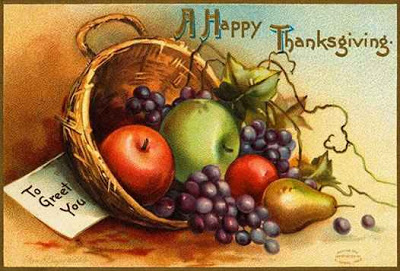
Thanksgiving Day is a national holiday celebrated in Canada and the United States. It was originally celebrated as a day of giving thanks for the blessing of the harvest and of the preceding year. Thanksgiving is celebrated on the second Monday of October in Canada and on the fourth Thursday of November in the United States. Several other places around the world observe similar celebrations. Although Thanksgiving has historical roots in religious and cultural traditions, it has long been celebrated in a secular manner as well.
This is the perfect time of year for everyone around the world to be thankful for what they’ve been given.
- Sit quietly for a few minutes in complete silence. It’s best if you’re alone, and you close your eyes. Remove all problems from your thoughts for a moment. Push everything aside.
Then… think about what you DO have:
- Are you breathing? Yes, you are. Be thankful that you’ve been given LIFE…the biggest miracle of all.
- Do you have loved ones? Be thankful that they are in your life.
- Do you have a roof over your head – even if it’s hard to pay for? Be thankful for that… many people don’t.
- Are you starving? No? Be thankful that you have food to eat. There are millions starving around the world that would love to have some food from your cupboard.
Think for a moment how lucky you are to be alive… even if it’s not always easy.
Stir-up Sunday is an informal term in Anglican churches for the last Sunday before the season of Advent. It gets its name from the beginning of the collect for the day in the Book of Common Prayer, which begins with the words, “Stir up, O Lord, the wills of thy faithful people”. But it has become associated with the custom of making the Christmas puddings on that day.
Why not blend the best of both worlds? Invoke the Goddess Hestia’s blessing in your kitchen and make some pudding for the whole family (or a gathering of friends). Traditionally, families gather together in the kitchen of their homes to mix and steam Christmas pudding on Stir-up Sunday. Parents taught their children how to mix ingredients for the pudding. Everyone took a turn to stir the pudding mix for each person involved is able to make a special wish for the year ahead. Practically, stirring the mixture is hard work, therefore as many as possible are involved.
By tradition the pudding mixture is stirred from East to West in honor of the three wise men who visited the baby Jesus.Have each person present stir the pudding clockwise for a few minutes as they focus on a wish. By next year at this time, the wish should manifest.
It was common practice to include small silver coins in the pudding mixture, which could be kept by the person whose serving included them. The usual choice was a silver threepence or a sixpence. The coin was believed to bring wealth in the coming year. Other tokens are also known to have been included, such as a tiny wishbone (to bring good luck), a silver thimble (for thrift), or an anchor (to symbolise safe harbour).
On a historical note:
The Christmas pudding is one of the essential British Christmas traditions and is said to have been introduced to Britain by Prince Albert, husband of Queen Victoria (the reality is that the meat-less version was introduced from Germany by George I in 1714.). Most recipes for Christmas pudding require it to be cooked well in advance of Christmas and then reheated on Christmas day, so the collect of the day served as a useful reminder.
About Hestia:
The Greek goddess of household affairs, Hestia watches over our cookery today to help manifest family unity and ensure tasty outcomes. As a hearth goddess, she provides the spiritual energy necessary to keep our faith sure and the inner fires burning bright. Greek art did not try to portray this goddess, because she was considered the beginning – the source from which all else was ignited and set in motion.
Light a candle this morning to welcome Hestia’s unity and energy into your home. Or, carry matches in your pocket so the spark of this goddess can ignite in any situation where it’s needed. Throughout the day, when you need more commitment to your beliefs, just light one match to invoke Hestia’s aid.
Collected from various sources
